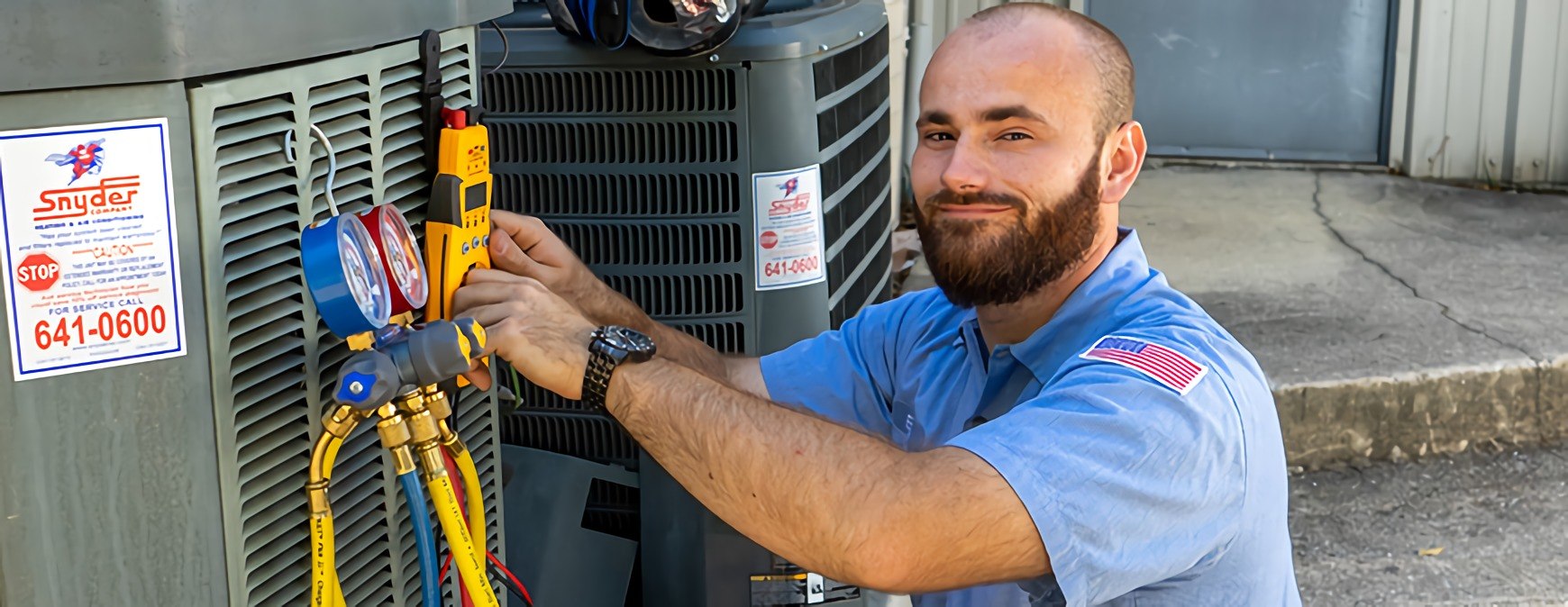
A major deadline in the HVAC industry is swiftly approaching. New sources of one of the most commonly used refrigerants in the industry, R-22, will no longer be available starting on January 1, 2020.[1]
Chances are, by the time you graduate from your HVAC/R training program and are working in the field, you could have to help your customers navigate the ban on production and importation of R-22.
Here’s what you need to know about the upcoming R-22 phaseout.
R-22 Phaseout: Recap Past to Present
R-22 is one type of HCFC, a class of refrigerants scientists have found destroys the ozone layer, the stratospheric shield that protects the Earth from the sun’s damaging ultraviolet radiation. CFCs and halons are also harmful to the ozone layer.[2] HFCs have been found to contribute to global warming.
Under Section 608 of the Clean Air Act, the Environmental Protection Agency (EPA) is responsible for protecting the stratospheric ozone layer.[3] The agency manages the phaseout of ozone-depleting substances, such as HCFCs, including R-22.
Get Started on the Path to a New Career
Fill out our form to learn how we can help you change your life.
Attempts by the EPA to ban refrigerants contributing to global warming were recently overturned by a Federal Court. [4] The agency recommends refrigerant substitutes for R-22 under the Significant New Alternatives Policy (SNAP) program.
R-22 Phaseout Timeline
| Date | EPA Phaseout Schedule | R-22 Allocation | R-22 Cost |
| 2010 | Import, production and use of R-22 banned, except for servicing existing equipment. | ||
| 2012 | $2,250 per 30 lbs. cylinder | ||
| 2013 | 63 million pounds | $1,050 per 30 lbs. cylinder | |
| 2014 | 51 million pounds | ||
| 2015 | Import, production and use of all HCFCs prohibited, except for servicing existing equipment. | 22 million pounds | $300 per 30 lbs. cylinder |
| 2016 | 18 million pounds | $480 per 30 lbs. cylinder | |
| 2017 | 13 million pounds | $700+ per 30 lbs. cylinder | |
| 2018 | 9 million pounds | $350 per 30 lbs. cylinder | |
| 2019 | 4 million pounds | ||
| 2020 | All importation and production of R-22 banned. Only use from recycled or stockpiled sources allowed. | None | |
| 2030 | Remaining production and import of all HCFCs banned. | None |
[5][6][7][8]
EPA Regulations for Working With R-22
One of the most important ways HVAC technicians can prepare for the R-22 phaseout is to follow EPA Section 608 refrigerant regulations. Under the law, HVAC technicians are prohibited from knowingly venting R-22 and must adhere to EPA rules for reclaiming and recycling the refrigerant. The agency requires any technician working with R-22 to have its Section 608 Technician Certification.[9]
How HVAC Technicians Can Prepare Customers for the R-22 Phaseout
What’s clear from the chart above is that restrictions on R-22 since 2010 have resulted in decreased supplies and significant price volatility. Keep this in mind as you review the options HVAC techs have for handling the R-22 phaseout below.
Continue to Use R-22
In the commercial and residential sector, R-22 is used in most air conditioning equipment produced before 2010.[10] This means a lot of your customers may still rely on the refrigerant. They can continue to use R-22, but it may be more expensive because only previously-produced or reclaimed quantities will be available.[11]
Retrofit HVAC System
Retrofitting an older air conditioner to take R-22 replacements is another option for some customers.[12] R-22 alternative refrigerant blends acceptable for retrofitted equipment include:
- R-404A
- R-407A
- R-407C
- R-417A
- R-422B
- R-422C
- R-422D
- R-427A[13]
Replace HVAC System
After about 15 years of use, an HVAC system is more prone to leaks or component failures.[14] Customers with older equipment are probably due for an HVAC upgrade.
Not only will servicing newer equipment eliminate the R-22 phaseout issue, but it may also promote energy efficiency and reduce fire hazards.[15] Replacing an older heating or cooling unit with Energy Star-qualified equipment, for example, can reduce an annual utility bill by more than $115.
Stay Current With HVAC Industry Regulations
The R-22 phaseout highlights the regulatory side of working in the HVAC industry. Just as the equipment frequently becomes more complex, the laws governing how techs do their job continually changes.[16]
It’s important for anyone working in this field, especially those handling refrigerants, to stay current with the latest regulations.
The R-22 phaseout isn’t the only rule shaping the field. There are other industry regulations to watch in 2019.
Additional Sources
[1] https://lasvegassun.com/news/2019/feb/22/what-to-know-as-a-common-hvac-refrigerant-is-phase/
[2] https://www.epa.gov/sites/production/files/2015-07/documents/phasing_out_hcfc_refrigerants_to_protect_the_ozone_layer.pdf
[3] https://www.epa.gov/ozone-layer-protection/ozone-protection-under-title-vi-clean-air-act
[4] https://www.epa.gov/ods-phaseout
[5] https://www.epa.gov/sites/production/files/2015-07/documents/phasing_out_hcfc_refrigerants_to_protect_the_ozone_layer.pdf
[6] https://aristair.com/blog/r22-phased-out-the-timeline-facts-you-need-to-know/
[7] https://refrigeranthq.com/2019-r-22-refrigerant-pricing-predictions/
[8] https://refrigeranthq.com/how-much-is-r-22-freon-per-pound-in-2015/
[9] https://www.epa.gov/section608/section-608-technician-certification-0
[10] https://lasvegassun.com/news/2019/feb/22/what-to-know-as-a-common-hvac-refrigerant-is-phase/
[11] https://www.epa.gov/ods-phaseout/homeowners-and-consumers-frequently-asked-questions
[12] https://aristair.com/blog/r22-phased-out-the-timeline-facts-you-need-to-know/
[13] http://www.refrigerants.com/pdf/NRInews-2009Winter.pdf
[14] https://lasvegassun.com/news/2019/feb/22/what-to-know-as-a-common-hvac-refrigerant-is-phase/
[15] https://www.bryansunited.com/blog/bryans-united-air-conditioning-3-potential-fire-hazards-associated-to-your-hvac-system
[16] https://www.bls.gov/ooh/installation-maintenance-and-repair/heating-air-conditioning-and-refrigeration-mechanics-and-installers.htm
This blog has been labeled as archived as it may no longer contain the most up-to-date data. For a list of all current blog posts, please visit our blog homepage at https://www.rsi.edu/blog/

